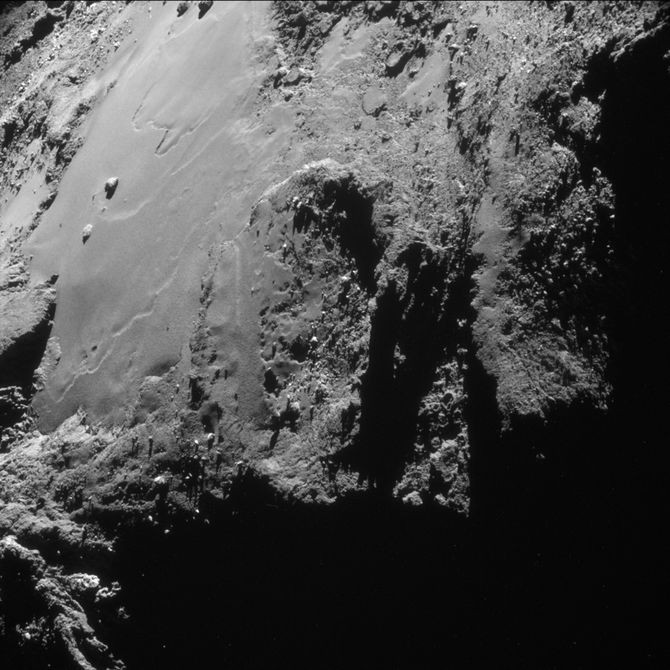Rosetta close-up images of Comet 67P show eerie ancient landscape

Steep cliffs and jagged edges of Comet 67P/Churyumov-Gerasimenko set against the dark space make for some impressive, though eerie images of an alien, ancient land caught on camera by Rosetta's Navcam.
The close-up views were taken immediately following the landing of Philae lander between 23 September and 21 November 2014 during the space probe Rosetta's study of the comet 8 km from the surface.
The close approach was responsible for the images spilling the Navcam field of view.
The images were released by the European Space Agency's Planetary Sciences Archive.

The NAVCAM captured the Hatmehit region on the small lobe of comet as also some wonderful views of Hatmehit, the large, 1 km-wide depression on the comet's small lobe, around the time of Philae's landing.
Rosetta departed from Earth in 2004 and visited Mars, came back to Earth, visited asteroid 2867 Šteins 5 and then was back to Earth again; next it dropped in on asteroid 21 Lutetia, before finally entering orbit around 67P/Churyumov-Gerasimenko in August 2014.

On 12 November the Philae lander touched down in a dramatic feat which was applauded as the biggest achievement in physics.
Three days later the 100 kg robotic probe ran out of power after bouncing to a shaded rocky outcrop on the comet.
While its location on the dusty iceball has been narrowed down to an area of 30 by 50 metres (98 by 164 feet), Rosetta's cameras have not been able to spot the probe.
The 4km wide comet 67P with the orbiting Rosetta will reach its closest point to the sun by August 13 after which it will veer away into deep space.

Being the leftovers from the early solar system, comets are believed to have brought water and other molecules necessary for life on Earth. There is increasing conflict of views on their role as water bearers.

© Copyright IBTimes 2025. All rights reserved.





















